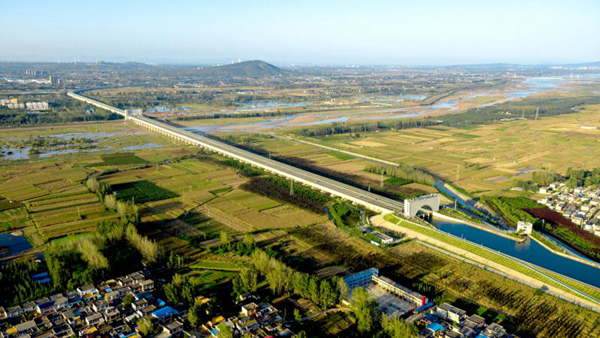
The central route of China's South-to-North Water Diversion Project has surpassed its annual target of water supply to the dry areas in the country's north for two consecutive years, benefiting over 79 million people along the route.

According to the China South-to-North Water Diversion Corporation Limited, the project had supplied up to 8.62 billion and 8.9 billion cubic meters of water in the 2019-2020 and 2020-2021 periods, respectively, to northern China. The water diverted to Henan, Hebei, Tianjin and Beijing, had exceeded the annual target of 8.54 billion cubic meters.
The central route of the project benefits around 79 million people in 24 medium- and large-sized cities and over 130 counties.
According to official data, water diverted from the south accounts for 75% of the daily water supply in Beijing's urban area, and over 95% in Tianjin's urban area. In Hebei province, residents in 80 cities, counties, and districts are using the water from the project. In Henan province, 11 provincially administered cities, seven county-level cities, and 25 counties are also supplied with the water diverted from the project.
Besides meeting the water needs of people along the route, the project is also contributing to ecological improvement. Since its launch, the central route of the project has replenished a total of 6.9billion cubic meters of water to over 50 rivers in China's dry north.
Partly due to the water diversion project, Beijing's average underground water level rose by 1.49 meters in August month on month. According to monitoring data, the 16 districts in Beijing have all witnessed rising underground water levels, with the level in Pinggu district increasing up to 5.88 meters.
The central route of the project has also been running safely for 2,516 days since its launch.